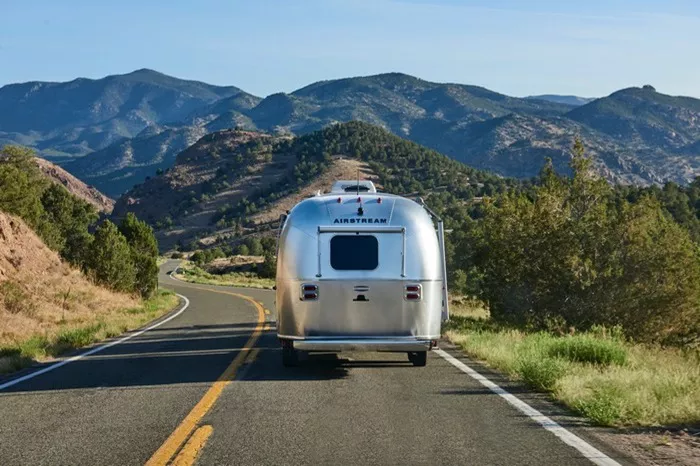Purchasing RV insurance is a crucial and often complex step for anyone who owns or plans to purchase a recreational vehicle. Understanding how to get RV insurance can initially seem overwhelming due to the various coverage options and providers available. This comprehensive guide will walk you through the essential steps to acquire RV insurance and ensure you select the best coverage for your unique needs and circumstances.
Understanding RV Insurance
RV insurance is specifically designed to protect your recreational vehicle in a range of scenarios, including accidents, theft, and damage. Unlike standard auto insurance, RV insurance accounts for the distinct needs of motorhomes and travel trailers, offering tailored coverage that addresses their specific risks and requirements. Here’s an in-depth look at the different types of RV insurance coverage:
Liability Coverage
Liability coverage is a fundamental aspect of RV insurance, providing essential protection if you cause damage or injuries to others while driving your RV. This includes:
Bodily injury liability, which covers medical expenses and legal costs if you injure someone in an accident.
Property damage liability, which pays for repairs or replacement of another person’s property damaged in an accident you caused.
These coverages are crucial as they help safeguard your financial assets from potentially devastating costs resulting from accidents.
Comprehensive Coverage
Comprehensive coverage is designed to protect your RV against damages that are not related to collisions. This includes:
Theft, which covers the loss of your RV if it is stolen.
Vandalism, which includes damages caused by intentional acts of destruction.
Fire, which provides coverage if your RV is damaged or destroyed by fire.
Natural disasters, which includes damages from events like hurricanes, floods, or earthquakes.
Comprehensive coverage is vital for protecting your RV from a range of potential threats that are outside the realm of driving-related incidents.
Collision Coverage
Collision coverage pays for damages to your RV resulting from collisions, regardless of who is at fault. This includes:
Collisions with other vehicles, which covers repairs or replacement if you hit another vehicle.
Collisions with stationary objects, such as trees or guardrails, which provides coverage for damages caused by hitting stationary objects.
This type of coverage ensures that your RV can be repaired or replaced if it is involved in an accident, offering peace of mind and financial protection.
Uninsured/Underinsured Motorist Coverage
Uninsured/underinsured motorist coverage protects you if you’re involved in an accident with a driver who does not have adequate insurance coverage. This includes:
Coverage for injuries, which helps pay for medical expenses if you’re injured in an accident with an uninsured or underinsured driver.
Coverage for property damage, which covers the cost of repairs or replacement for your RV if it’s damaged by a driver with insufficient insurance.
This coverage is essential to ensure that you are not left with significant financial burdens due to another driver’s lack of insurance.
Assessing Your RV Insurance Needs
Determining how to get RV insurance involves a thorough assessment of your specific needs based on various factors such as your RV type, usage, and personal preferences. Here’s a detailed approach to evaluating what coverage might be appropriate for you:
Type of RV
Different types of RVs require different types of insurance coverage. Consider the following:
Motorhomes, which are self-contained units that combine living quarters with driving capabilities, often require specialized coverage for both the vehicle and the living space.
Travel trailers, which are towed by another vehicle, may need coverage that focuses on the trailer itself.
Fifth-wheel trailers, which are a type of travel trailer with a special hitch, require coverage that addresses their unique design and towing requirements.
Each type of RV has specific insurance needs, so understanding your RV type helps in selecting the appropriate coverage.
Usage
The way you use your RV affects your insurance needs significantly. Consider:
Full-time living, where you reside in your RV year-round, may require more comprehensive coverage compared to occasional use.
Seasonal use, such as only using your RV during certain times of the year, might affect the types of coverage you need.
Occasional trips, where the RV is used only for vacations or short trips, might require basic coverage with lower limits.
Understanding how you use your RV helps in determining the extent of coverage required for your specific situation.
Value of Your RV
The value of your RV plays a significant role in determining the amount of coverage you need. Consider the following:
Replacement cost coverage, which pays the amount required to replace your RV with a new one of similar type and quality.
Agreed value coverage, where you and your insurer agree on a value for your RV, ensuring you receive that amount in the event of a total loss.
Choosing the right coverage type based on your RV’s value ensures that you receive adequate compensation in case of a significant loss.
Finding the Right Insurance Provider
Selecting the right insurance provider is crucial to obtaining the best RV insurance coverage. Follow these steps to find a reliable provider that meets your needs:
Research Providers
Begin by researching insurance companies that offer RV coverage. Look for:
Reputation, which includes checking the company’s history and customer feedback.
Customer reviews, which provide insights into the experiences of other RV owners with the provider.
Financial stability, which indicates the company’s ability to pay claims and fulfill its obligations.
Conducting thorough research helps in finding a provider known for delivering quality service and financial reliability.
Compare Quotes
Obtain quotes from multiple insurance providers to compare coverage options and costs. Consider:
Coverage limits, which determine the maximum amount your insurer will pay for different types of claims.
Deductibles, which are the amounts you will pay out of pocket before insurance coverage kicks in.
Premiums, which are the regular payments you make to maintain your insurance coverage.
Comparing quotes ensures that you find the best value for your insurance needs, balancing coverage and cost effectively.
Check for Discounts
Many insurers offer discounts that can lower your insurance premiums. Look for:
Multi-policy discounts, which apply if you bundle RV insurance with other policies like auto or home insurance.
Safe driving discounts, which reward you for maintaining a clean driving record.
Membership discounts, which are available if you belong to RV clubs or associations.
Taking advantage of available discounts can significantly reduce your overall insurance costs.
See Also: How Much Is RV Insurance in Florida?
Applying for RV Insurance
Once you’ve chosen an insurance provider, follow these steps to apply for RV insurance:
Gather Information
Collect all necessary information required for the application, including:
RV make and model, which provides details about your vehicle.
Vehicle identification number (VIN), which uniquely identifies your RV.
Usage details, including how often and for what purposes you use your RV.
Having accurate and complete information ensures a smooth and efficient application process.
Complete the Application
Fill out the insurance application form with the information you have gathered. This includes:
Personal details, such as your name, address, and contact information.
RV details, including specifics about your vehicle and its usage.
Coverage choices, where you select the types and amounts of coverage you want.
Completing the application accurately is crucial for obtaining the correct insurance coverage.
Review and Sign
Carefully review the policy terms and conditions before signing. Pay attention to:
Coverage details, which outline what is included and excluded from your policy.
Exclusions, which specify situations or types of damage that are not covered.
Premium amounts, which are the costs you will pay for the insurance coverage.
Signing the policy finalizes your insurance coverage and ensures that you are protected according to the agreed terms.
Maintaining Your RV Insurance
After acquiring RV insurance, maintaining it is essential to ensure continuous protection. Here’s how to manage your policy effectively:
Regularly Review Your Policy
Periodically review your insurance policy to ensure it continues to meet your needs. Consider:
Changes in RV value, which might necessitate adjustments in your coverage amounts.
Changes in usage, which could affect the type or extent of coverage required.
Updates in coverage options, as insurance providers may offer new or improved coverage choices.
Regular policy reviews help keep your insurance relevant and sufficient for your current needs.
Report Changes
Inform your insurer about any changes that may impact your policy. This includes:
Changes in RV usage, such as using it for full-time living instead of seasonal trips.
Modifications to the RV, such as upgrades or alterations that may affect its value.
Address changes, as this can impact the terms of your coverage and premiums.
Keeping your insurer informed ensures that your policy remains valid and accurately reflects your current situation.
Stay Informed
Stay updated on changes in insurance laws and coverage options to make informed decisions. This includes:
New insurance regulations, which may affect your coverage requirements or options.
Changes in coverage types, as insurers may introduce new or revised insurance products.
Staying informed helps you make well-informed decisions regarding your RV insurance and ensures that you remain adequately protected.
Conclusion
Understanding how to get RV insurance is a crucial aspect of protecting your investment and ensuring peace of mind while enjoying your RV adventures. By thoroughly assessing your RV insurance needs, finding a reliable insurance provider, and maintaining your policy, you can safeguard your RV and enjoy your travels with confidence. Remember, RV insurance is not just a legal requirement but an essential component of responsible RV ownership, providing the protection and security necessary for a worry-free experience on the road.






















